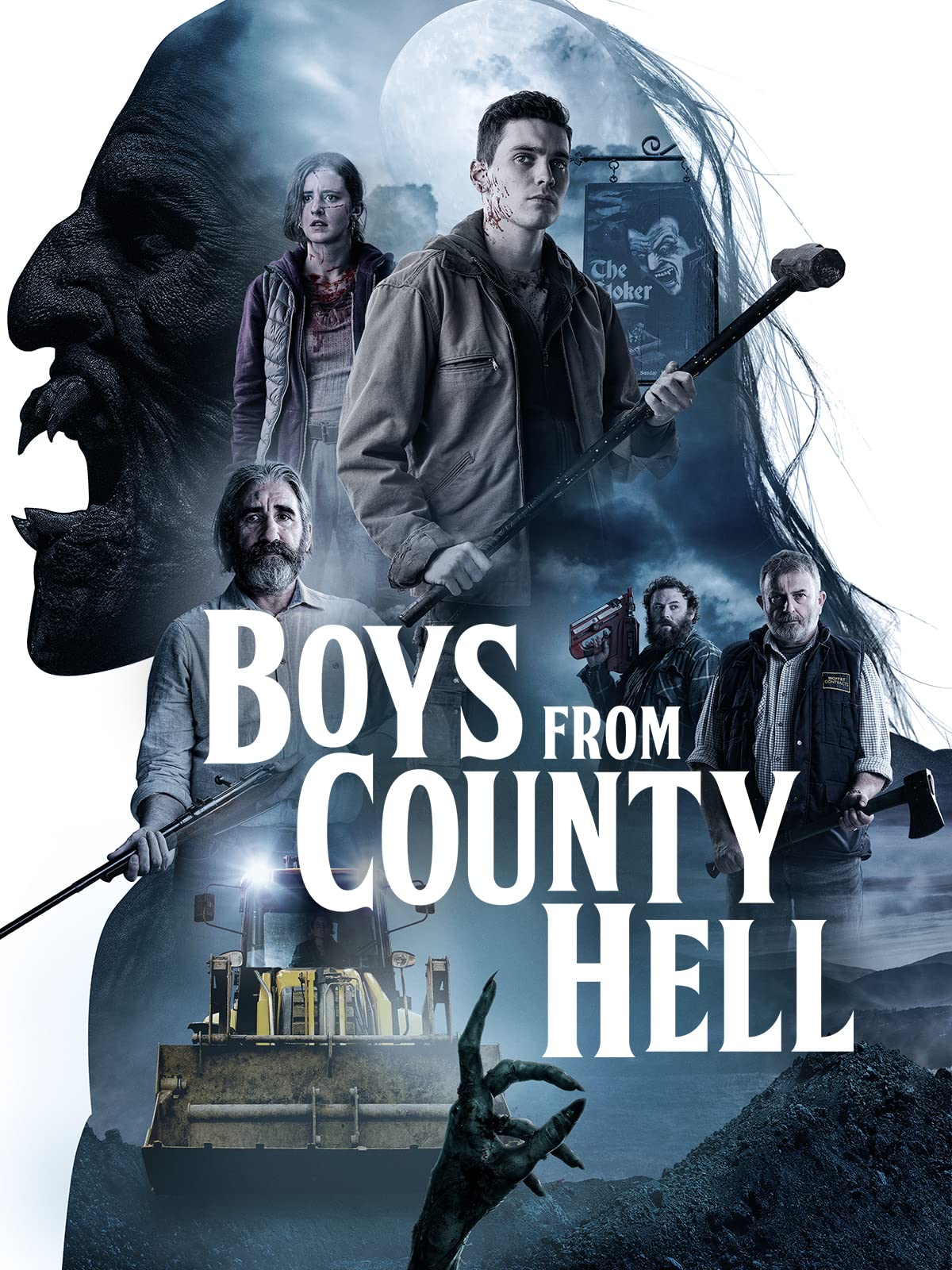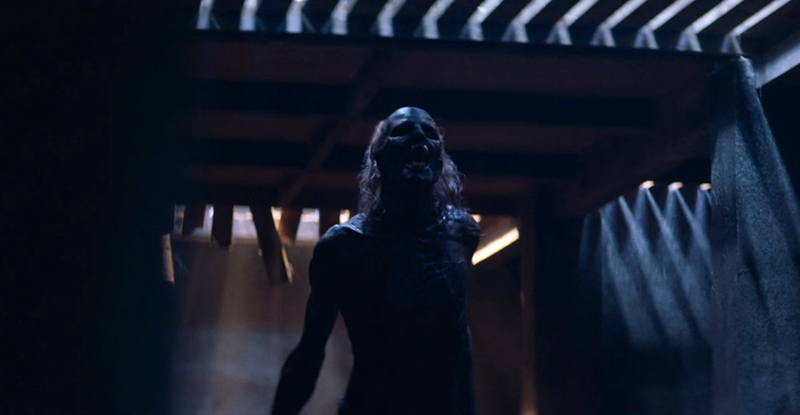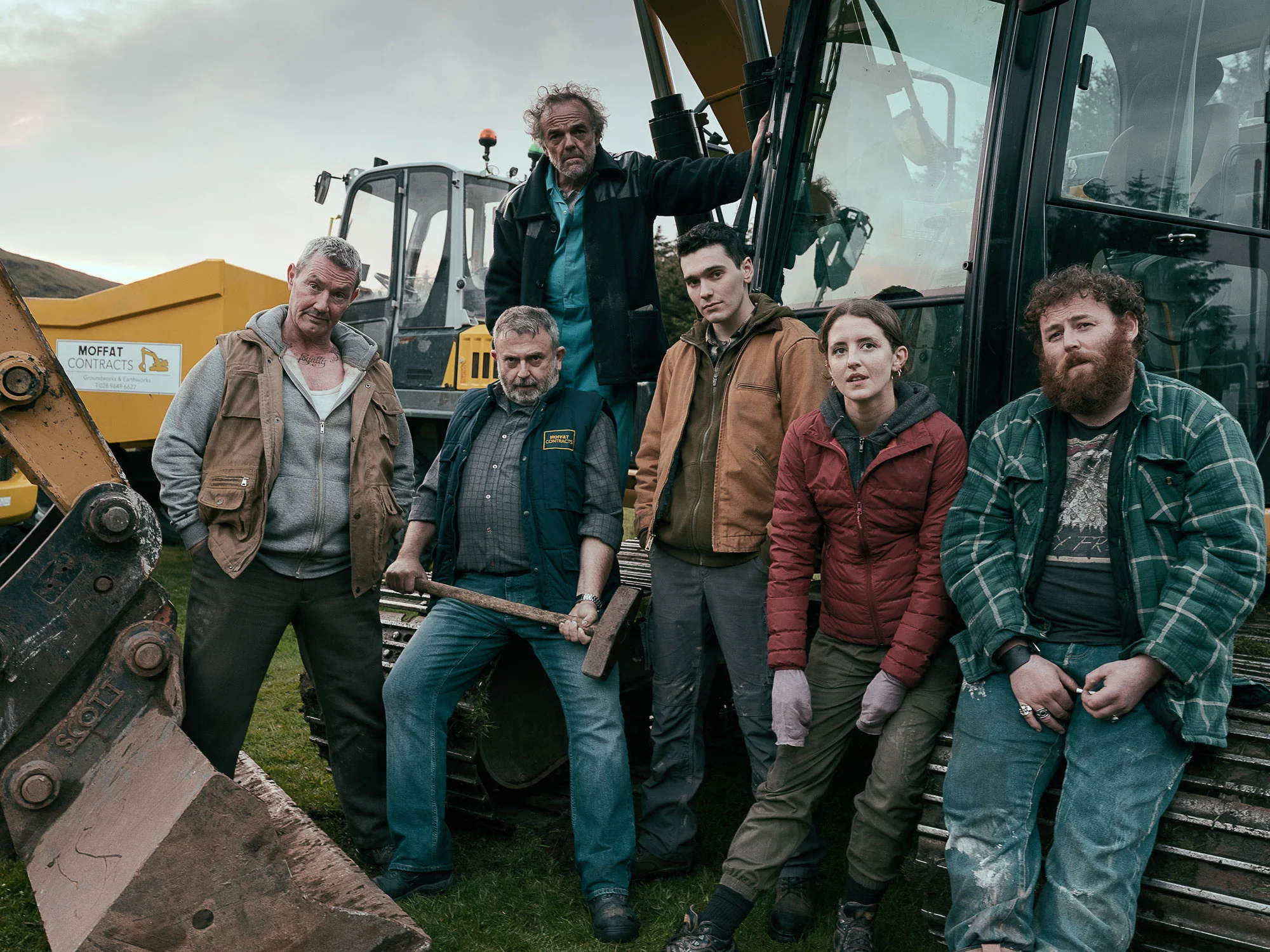With the release of movies like The Wolf of Snow Hollow, One Cut of the Dead, and What We Do in the Shadows in recent years, there has been a reemergence of inventive horror comedies, each giving a new life to some of the classic horror archetypes, much like horror classics like Fright Night and An American Werewolf in London did in their golden era.
In the year 2020, the film Boys From County Hell will be released. It is a lighthearted but unexpectedly moving vampire story taken from Irish writer-director Chris Baugh’s 2013 short film. With a lighthearted yet surprisingly sad vampire plot based on folklore, familial struggle, and the risks of poor town planning with savoir-faire, it follows the latest horror movie trend.
The story is set in a fictional backwater village named Six Mile Hill. Its lone claim to fame is that the local legend of Abhartach inspired the book Dracula after Bram Stoker stayed there briefly. The construction crew that demolished the cairn over Abhartach’s burial must set out to right the wrong when Abhartach is reawakened after the cairn over his grave is destroyed to make room for a bypass that is already unpopular with the people.
It is an engrossing film that covers a wide range of topics. It has the laughs, the filthy mouth moments, the gory aspects of horror, and a whole lot of Irish charm. Let us have a look at what makes this film so enjoyable to watch.
Boys from County Hell (2020)

Baugh begins his video with a sweet older couple arguing in their living room about whether they should go out for a drink at the local bar The Stoker or stay in for the evening. It’s too late now! Blood begins to flow from them as if they are being drawn to an unknown entity. We go back two months to when their pleasant TV tea turns into a grisly bloodbath – domesticity and devilry will share a room to scary and comic effect throughout this film.
Eugene (Jack Rowan) and William (Fra Fee) have been friends since childhood. They seem to be stuck in a loop of day drinking and spooking naïve tourists while fantasizing about escaping their hometown, Six Mile Hill, which is a make-believe rural Irish village shot in dramatic wide angles and shadows by the Director of Photography Ryan Kernaghan.
Baugh flashbacks to two months earlier at The Stoker, where Eugene and William are having a friendly banter. While they are whiling away their time at The Stroker, they come across a couple of visitors who are eager to view Abhartach’s reputed burial.
The boys are all too pleased to take these easy marks to visit the imposing stone cairn on the top of the alleged vampire’s resting site, as it very conveniently happens to be located on land owned by William’s father.
Eugene and William have little to do in the northern village of Six Mile Hill. William plans to emigrate to Australia, and it is being discussed among the two while they are drinking. They had, quite smartly, decided to take the shortcut through the field where the alleged cairn was. Eugene asks William to tell his girlfriend Claire, or he will, resulting in a fistfight between the two when Eugene is dropping William back at his house.
When they are fighting, William gets pushed into the cairn and cuts his hand on one of the stones. Just then, a bull comes out of nowhere and attacks him. It smashes his body into the cairn resulting in his death.
A bypass is about to wreak havoc in the town; this major construction project threatens to uproot the community of Six Mile Hill, which is most known for famous author Bram Stoker passing through the town and deriving inspiration from the Irish vampire legend of Abhartach. The project’s contract is won by Francie Moffat (Nigel O’Neill), much to the chagrin of the locals.
They are supposed to tear down the cairn and create the bypass over William’s father’s field. Eugene, Francie’s son, is given the hairy eyeball like his father, owing to his lack of life direction and motivation. The addition of William’s death and his father winning the contract aren’t helpful either. Fun fact, Chris Baugh wrote the screenplay for this film just five days after he visited Bram Stoker’s actual grave.
Our main character is Eugene, who spends his evenings drinking in the neighborhood pub and his days working for his father’s construction company. Eugene and his father have a tumultuous relationship, and they must overcome their differences if they are to survive. Initially, when Eugene and Claire find their now undead night watch guard, Francie doesn’t believe that the man has turned into a vampire. He claims that he is simply living for a few more minutes the way a chicken does, undergoing a torturous death.
However, he starts to believe the truth when the group goes to George’s house. Eugene finds a cut-up goat in a surgical room. When the group confronts George, he asks Eugene to go to the good room and see for himself.
The good room used to be forbidden to William and Eugene, and now it was the thing that was caging him. The night that William died, he had cut his hand on the cairn. Later that night, George wanted to prepare William for the burial himself, but before he could do anything, William rose on this own.
Since then, he had been kept inside the good room and caged. He was given blood for sustenance, but it wasn’t enough. The group collectively voted on putting William down since he wasn’t himself anymore. The sequence is quite action-packed and keeps you on the edge of your seat throughout. They find out that the only way to keep William subdued is by putting him under the ground and covering that with stones.
Of course, the film wouldn’t be that great if it all ended right here. Claire ended up putting the stones from Abhartach’s grave on top of William’s. Immediately, a sickly-looking, rotten, and gray leg comes out from the grave.
They run back to George’s to formulate a game plan. The way this movie’s Abhartach works is that he doesn’t have to bite people to drink their blood. He can somehow drain their blood like water. With this, the movie circles back to the first scene, where the old couple started bleeding out of their eyes and nose.
The little band of saviors goes to the rescue of the town. They realize that Abhartach can drink their blood and drain it only if he is close enough. So, Claire grabs her mother and puts her in a construction machine to distance her from the blood-draining monster. Meanwhile, Eugene and Francie figure out that Abhartach is going to the house that belonged to Eugene’s mother. Turns out, she came from a family of Chieftains, which, ding ding ding, was the same family that buried Abhartach in the first place.
So, our central scare factor, the man with barely any hair on his head, graying skin, and a body of a stick man, shows up at the mother’s house. Now technically, since Eugene is the direct descendant of the chieftains, he is the one who the Abhartach is after. But before the undead can get to Eugene, Francie knocks him out to protect him and take care of the vampire himself.
While the intention was pure and sweet, it did not work. Francie decapitated Abhartach, but the man is tenacious. He rejoins his head and gets back to work. He attacks Francie and leaves us with the gruesome vision of a broken leg with a bone sticking out. Eugene takes a hobbling Francie out of the house towards the garage area. They hope that the legend about vampires burning in the sunlight might just be true since the sun is peeking out from the horizon.
Fun fact, it is not. According to the film, the only way to subdue the vampire is by burying it and covering that with a pile of stones. We get another action-packed sequence with Eugene doing his best to bury the vampire and running out of weapons leading to another really gruesome scene where he pulls out Francie’s leg bone and uses it as a weapon. It really makes you want to throw up a little in your mouth, but it also makes you feel thrilled and excited.
The film ends with Eugene having, finally, read The Dracula and Claire leaving for Australia.
Ancient Irish Vampire

Abhartach, sometimes known as Avartagh, is an early Irish legend first recorded in Patrick Weston Joyce’s The Origin and History of Irish Place Names (1870). In the original myth, Abhartach is supposed to be a dwarf magician.
Abhartach was an Irish mythological figure who is thought to have inspired Count Dracula several centuries later. According to mythology, a cruel warlord named Abhartach flourished in the fifth century in the Irish town of Slaughtaverty.
According to legend, most of the land was divided into small sections ruled by petty rulers, many of whom were not particularly good people. Abhartach was thought to possess dark, magical abilities and was dreaded by his people, whom he was alleged to mistreat. The townspeople wanted to get rid of the bothersome monarch, so they hired another local king to handle the situation.
It should have been straightforward enough in terms of coups. The monarch was assassinated and buried standing up, which was seen to be the proper and respectable manner to do things given his height. Unfortunately for the residents of Slaughtaverty, the nightmare was not yet ended. According to mythology, Abhartach rose from the dead and demanded blood tribute from his people in order to maintain his energy. Abhartach was slaughtered and buried several times as a result of this, emerging from the dead each time to demand blood from the living.
The irritated warlord eventually grew bored of slaying this undead beast. He met some folks who knew about magic and begged them for help with his dilemma. They stated that the monster was caught between realms and couldn’t be destroyed, but that if the right actions were done, he could be trapped beneath the soil.
According to mythology, he had to be slain with a sword explicitly forged of “yew wood,” which sounds eerily similar to the popular stake-through-the-heart notion. However, it differs from modern lore in that he was to be flipped upside down and covered with a large stone, as well as thorns, in order to keep him in his burial spot.
According to another legend, Abhartach was a ruthless Celtic lord who used black magic to enslave and murder his subjects for amusement. He was eventually killed by a rival tribe and buried standing up, as was the norm at the time.
Abhartach’s black magic, on the other hand, caused him to reappear as a team-march (walking dead), demanding that his subjects sacrifice others to him and allow him to feast freely on their blood. His subjects killed him on a regular basis, but because of his power, he always came back to life. His subjects eventually succumbed to him and began offering blood sacrifices to him.
However, when the Celtic hero Cathain learned of Abhartach’s oppression, he sought the advice of a Druid, who gave him a yew-wood sword that would prevent Abhartach from rising again if he was killed. Cathain killed him with the wooden sword, which is much like the stake to the heart myths we hear about vampires, and Abhartach was buried upside-down with a massive stone on top of his grave to keep him from rising again if he did.
Why Should You Watch Boys from County Hell?

Boys from County Hell feels like a horror movie with a coming-of-age twist to it. The personalities of all the characters have a genuine quality to them, which adds to the otherworldly premise’s plausibility.
They all deeply care about each other. It is all based in a small town, so you can see the familiarity and the closeness of all the people in it. The main characters all feel like family as they never hold themselves back when talking to each other and are ready to call each other out on their stupid ideas.
The movie is also highly amusing. The humor is dry, and it works well with the scares. The connection between the vampire myth and the Irish folk legend of Abhartach is also noteworthy in Boys from County Hell. This adds a fresh perspective to the vampire picture and helps to place the plot in its proper context. It gives a nice twist to the well-known legend, and the homely feeling it provides makes it a feel-good horror movie.
